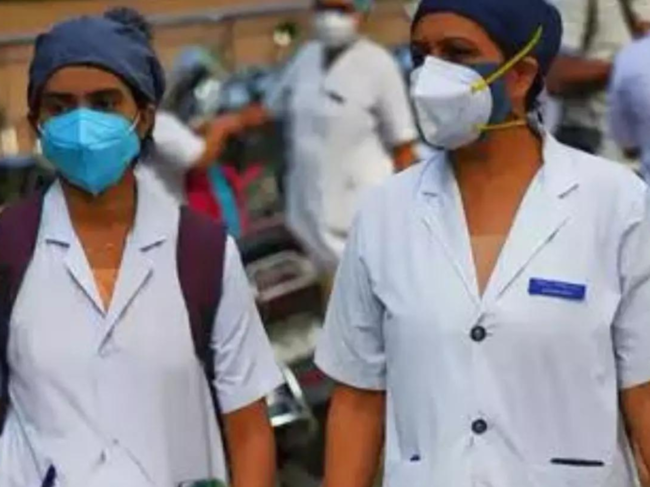
Restrictions in Kerala district
These zones, where the virus was confirmed, are subject to strict restrictions aimed at limiting the spread of the virus. The district authorities have issued clear directives to close shops in the containment zones by 7 PM daily. Public gatherings have been strictly prohibited to reduce human-to-human transmission. Cinema halls, schools, colleges, Madrassas, anganwadis, and tuition centers are shut down in the containment zones to minimize exposure risks, and authorities have mandated wearing masks in public spaces. District-wide, weddings, funerals, and other public events have been restricted in terms of attendance. These steps are meant to slow the spread of the highly contagious virus. People have been asked to wear masks in public.Also Read: Nipah Virus Outbreak: 175 People Effected in Kerala, Health Minister
History of Nipah Virus Outbreaks in Kerala
The Nipah virus is not new to Kerala, with outbreaks reported in the Kozhikode district in 2018, 2021, and 2023, as well as in the Ernakulam district in 2019. The latest case in Malappuram is part of an ongoing challenge for the state in managing outbreaks of this highly lethal virus. The presence of Nipah virus antibodies has been detected in bats across multiple districts in Kerala, including Kozhikode, Wayanad, Idukki, Malappuram, and Ernakulam, pointing to fruit bats as the primary source of infection.
Understanding Nipah Virus: What Is It?
The Nipah virus (NiV) is a zoonotic virus, according to WHO, meaning it is transmitted from animals to humans. However, it can also spread through contaminated food and direct person-to-person contact. Infected individuals may exhibit a range of symptoms, from mild respiratory distress to fatal encephalitis, a condition characterized by swelling in the brain. Unfortunately, there is no known treatment or vaccine to combat Nipah virus infections, making it a serious public health threat.The virus primarily originates from fruit bats of the Pteropodidae family, which are the natural hosts. These bats can infect animals like pigs, which in turn can spread the virus to humans. Since its discovery in 1999 in Malaysia, Nipah has caused multiple outbreaks across Asia, according to WHO. Its ability to infect a wide range of animals and humans, coupled with the lack of a cure, makes it particularly dangerous.
Transmission of Nipah Virus
Nipah virus is transmitted through direct contact with infected animals or humans, or through consuming contaminated food. During the first major outbreak in Malaysia in 1999, most human cases were linked to contact with sick pigs or their tissues. It is believed that individuals contracted the virus through unprotected exposure to the pigs’ secretions or by handling contaminated tissues.The virus can also spread through close contact between humans, particularly among caregivers or family members of infected patients. Human-to-human transmission is a significant concern in areas where outbreaks occur, as it exacerbates the spread of the virus, especially in densely populated regions like Kerala.
Symptoms and Effects of Nipah Virus
Nipah virus infection can manifest in a variety of ways. Some people remain asymptomatic, while others develop severe respiratory illness or fatal encephalitis. Initial symptoms include fever, headaches, muscle pain (myalgia), vomiting, and sore throat. These may be followed by more serious symptoms such as dizziness, altered consciousness, and neurological issues, indicating encephalitis.In severe cases, the infection can lead to acute respiratory distress, seizures, and rapid progression to a coma within 24 to 48 hours. The incubation period of the virus typically ranges from 4 to 14 days, but in some cases, it can take up to 45 days for symptoms to emerge. Survivors of acute encephalitis often experience long-term neurological issues, and the case fatality rate is estimated to be between 40% and 75%, depending on the outbreak.
Diagnosis of Nipah Virus
Diagnosing Nipah virus is challenging because the initial symptoms are non-specific, making it difficult to distinguish from other viral infections. Accurate diagnosis often relies on a detailed clinical history and the collection of appropriate samples during the acute and convalescent phases of the illness. The most common tests used to detect the virus include real-time polymerase chain reaction (RT-PCR) tests from bodily fluids and antibody detection via enzyme-linked immunosorbent assay (ELISA), according to WHO. However, delays in sample collection, transport, and testing can hinder timely diagnosis, complicating efforts to contain the virus during an outbreak.Treatment and Prevention
Currently, there are no specific antiviral drugs or vaccines for Nipah virus infection. The only available treatment is intensive supportive care to manage severe respiratory and neurological symptoms. This typically involves hospitalization and close monitoring of the patient's condition to mitigate complications like acute respiratory distress or encephalitis.(Catch all the Business News, Breaking News, Budget 2024 Events and Latest News Updates on The Economic Times.)
Subscribe to The Economic Times Prime and read the ET ePaper online.
Read More News on
(Catch all the Business News, Breaking News, Budget 2024 Events and Latest News Updates on The Economic Times.)
Subscribe to The Economic Times Prime and read the ET ePaper online.










 Get Unlimited Access to The Economic Times
Get Unlimited Access to The Economic Times
